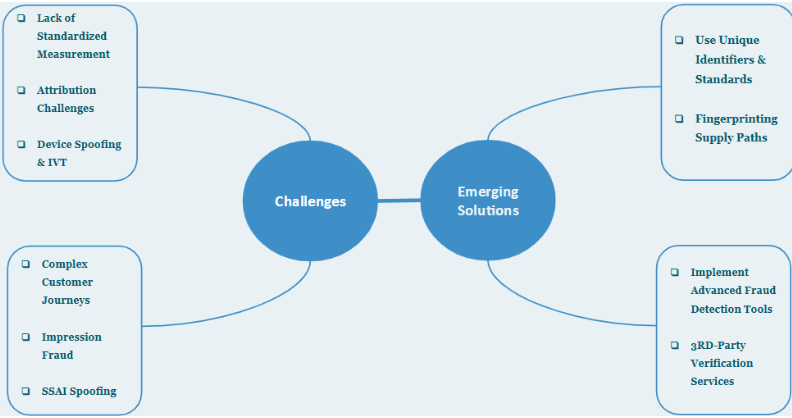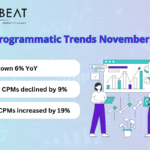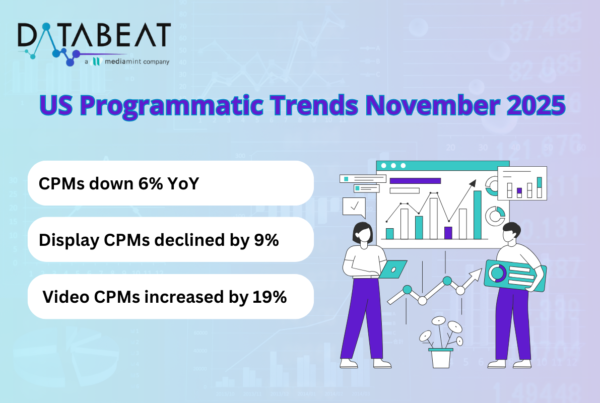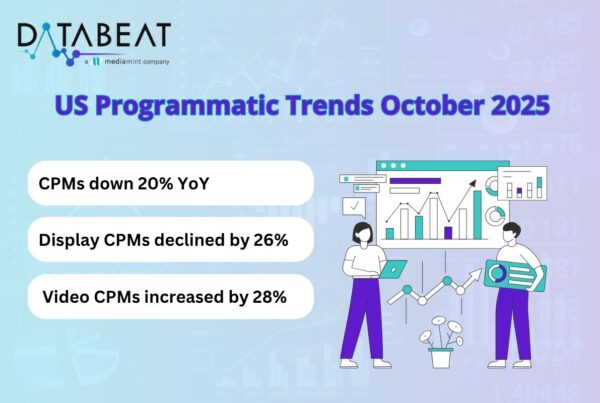
Date & Time – 25th October 2024, 1PM EST (Friday)
In our previous webinar episode, “CTV Advertising: Insights, Strategies, and Challenges,” we synergized industry leaders and DataBeat’s own experts to explore the most happening evolution of CTV advertising. With CTV rapidly reshaping the Audience engagement, the panel discussed the scope, challenges, possible strategies, and innovations that publishers and advertisers can use to unearth CTV’s full potential. From tackling transparency issues to leveraging interactive ad formats, our experts shed light on navigating this transformative space.
Topics of discussion
-
CTV’s growing adoption and its impact
-
Opportunities for small & Mid-sized publishers in CTV domain
-
Challenges and solutions in CTV Ad management
-
Fraud prevention and Transparency in CTV
-
Effective Inventory management & Ad Duplication
-
Role of data and Audience Targeting
-
Role of OOH (Out-Of -Home) in CTV Advertising
-
Innovative formats in CTV advertising
-
The future of shoppable & Interactive CTV Ads
-
Balancing Ad load and User Experience
1. CTV’s growing adoption and its impact:
Discussion Point: As consumers are shifting from linear TV to CTV in recent time, advertisers are finding potential ways to reach out to audiences and their engagement. The panel highlighted that CTV now occupied 50% of media portfolios in some cases and expects doubling of ad spending by 2028.
Summary: CTV adoption is growing exponentially where 88% of US households are now connected via CTV and is expected to reach 97% in coming years. The exponential increase in viewership minutes and potential YOY growth expected by analysts make advertisers more interested to invest heavily in the space leveraging CTV’s precise targeting and audience tracking seeing the appeal of high quality storytelling which we can tell via CTV on large screens is keeping CTV advertising in high demand
Takeaway: CTV’s growth has been bringing a unique way for brands to engage audiences in their living rooms, a zone which was previously dominated by traditional TV ads. The panel felt the need for intricate, targeted advertising that matches the shift in user’s viewing behavior.

2. Opportunities for small & Mid-sized publishers in CTV domain:
Discussion Point: Small publishers have been offered new avenues for reaching niche audiences with the CTV’s accessibility and its nature.
Summary: The table members opined that small publishers can now reach premium advertisers without needing a larger ad scale team. However, gaining visibility among big competitors still stands as a challenge.
Takeaway: Mid – sized publishers should explore viable partnerships with DSPs and shift focus on delivering quality content to lure advertisers who are looking for targeted audiences.

3. Challenges and solutions in CTV Ad management:
Discussion Point: With the incremental growth in the CTV industry, ad fraud is inevitable and will stay as a concerning issue, with critical ad placements complicating measurement and reporting. Panelists tackled the challenges of duplication, ad fraud, and transparency issues.
Summary: The panel members discussed their transparency – oriented initiatives, which involved clear reporting systems in place to reduce ad fraud and direct publisher partnerships.
Takeaway: To maintain transparency while reducing fraud, the stakeholders should work on ensuring clear data paths and joining hands with those partners that prioritize fraud- free inventory & reliability.

4. Fraud prevention and Transparency in CTV:
Discussion Point: CTV’s growth has drawn quick attention to the need for transparency in supply chain management and ad placements to prevent ad fraud.
Summary: The launch of initiatives like OpenX’s “TV by OpenX” to ensure a safe & secure environment with direct inventory, clear reporting and reducing third-party risks – opined the panelists.
Takeaway: Publishers and Advertisers should work in tandem with trusted platforms that prioritize transparency and direct publisher relationships to ensure brand integrity and ad spend effectiveness.
5. Effective Inventory management & Ad Duplication:
Discussion Point: Inventory management stands crucial, while ad replication becomes prevalent. Multiple SSPs bid on the same inventory leading to inefficiency and wasted ad spend.
Summary: Industry leaders discussed ways to improve Ad Inventory management by streamlining bids to prevent over-bidding and setting duplication limits. This in a way reduces tech overhead and improves cost efficiency.
Takeaway: Publishers should try to collaborate with ad tech partners to ensure the process of inventory management that enhances ad revenue, reduces duplication of bids and improves cost efficiency for advertisers.
6. Role of data and Audience Targeting:
Discussion Point: Audience targeting on CTV comes up with unique opportunities and challenges which includes IP-based targeting to reach household audiences.
Summary: The panel discussed Seller.json, App Ads.txt, and Schain from device data to first party insights, to create more relevant and personalized viewing experiences. They also cautioned against over – targeting which has the potential to limit audience reach.
Takeaway: CTV advertisers should try to optimize targeting to balance specificity with reach, using first-party data when available and should avoid overly narrow segments.
7. Role of OOH (Out-Of -Home) in CTV Advertising:
Discussion Point: OOH advertising integration into CTV budgets opens new opportunities for reaching audiences outside the traditional living room environments, namely public places, bars, and hotels.
Summary: The experts discussed the integration of OOH into CTV to maximize reach but felt the need of different attribution strategies and measurement techniques due to varied viewing scenarios.
Takeaway: Brands should be considering OOH as an extension of CTV to maximize audience reach in diverse environments, simultaneously making sure that the campaigns are designed to fit the unique experience of these spaces.
8. Innovations formats in CTV advertising:
Discussion Point: With the advent of new ad formats namely pausable ads and shoppable TV ads are making ads less interruptive and more engaging, which will allow viewers to interact with brands on their products more intuitively than ever before.
Summary: The panelists on a wider discussion, defined & noted that pause ads & shoppable ads as the most happening trend. While Shoppable ads allow consumers to purchase products directly from an ad, Pause ads on the other hand, offer brands a subtle but impactful way to catch a viewer’s attention without disrupting content. Panel felt that these ads are actually bridging the gap between viewing and shopping.
Takeaway: To maximize the impact & effectiveness, advertisers should consider these non – intrusive ad formats, which have the potential to increase user engagement without hampering viewer’s experience.

9. The future of shoppable & Interactive CTV Ads:
Discussion Point: Shoppable TV ads are predicted to see exponential growth, offering a seamless shopping experience while viewing directly from their TV screens.
Summary: Panelists had an interesting conversation about the future of CTV, in which every ad can be an interactive shopping experience, with popular brands like ShopSense AI making tremors by linking on-screen products to purchase options.
Takeaway: To sync with the trend, brands should prepare plans to integrate shoppable features into their CTV strategies, while enabling them to engage directly with the users and boost conversions through this interactive approach.
10. Balancing Ad load and User Experience:
Discussion Point: User experience and Ad loading emerged as crucial considerations in the CTV realm. Excessive ads can hurt the user’s viewing experience and might impact the platform’s long-term growth.
Summary: The panel emphasized a subtly balanced approach by suggesting that the platforms should prioritize consumer-friendly ad loads to see higher loyalty & engagement.
Takeaway: Publishers should take the onus of carefully monitoring ad loads, thereby creating a balance to maintain user experience and maximizing ad revenue.
Conclusion: As CTV alters the advertising environment, it provides unprecedented potential for brands and publishers to reach people in creative ways. To compete in this quickly changing environment, advertisers must solve critical issues such as fraud, strike a balance between ad load and user experience, and embrace new forms. Databeat is still devoted to guiding marketers and publishers through this terrain, providing data and support to help them design smart, compelling CTV campaigns that resonate with viewers.









